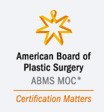

Plastic surgeons offer an ever-evolving array of treatments, and many of them do not involve surgery. In fact, over 14 million minimally invasive cosmetic procedures were performed in 2015, according to the American Society of Plastic Surgeons, and the most popular of these nonsurgical procedures were injections of botulinum toxin type A and soft tissue fillers.
Capable of softening the small signs of aging like wrinkles, fine lines and loss of volume without surgery or a lot of downtime, nonsurgical procedures are a fantastic way to attain a more youthful appearance. It’s no wonder that they have certainly generated plenty of buzz, but with a continually growing list of brand names and terms like liquid facelift, soft tissue filler, neurotoxin, stimulator and dermal filler thrown in the mix, it can be tough to sort out your options. Is Botox your best bet? Would a dermal filler do a better job? Is a combination the key? The most effective way to determine which injectable is right for you is a consultation with an experienced plastic surgeon, but here is a quick overview to get you started.
Botox® Cosmetic
Botulinum toxin type A doesn’t sound like a substance that can benefit your body, but don’t let the name fool you. Medically, this neurotoxin is used to treat migraines and muscle spasms. In aesthetic applications, Botox® Cosmetic, a prescription form of botulinum toxin type A intended for cosmetic uses, is injected in a targeted area to relax the muscles. This reduces their activity and smooths the overlying facial skin. Botox® Cosmetic is commonly used to smooth out forehead wrinkles, frown lines between the brows and crow’s feet. Most patients will begin to notice results in a few days, but it may take up to two weeks to see the full effect of the injections. The results typically last three to four months. Then, muscle reactions, and the wrinkles they cause, return.
Dermal Fillers
Dermal fillers are used to shape the contours of the face, add volume, soften creases and improve the appearance of certain scars. An assortment of products with different chemical make-ups and varying degrees of softness are available. Depending on the patient and the product, the duration of the results can be measured in either months or years. Options for dermal fillers include:
- Hyaluronic acid.Found in fillers like Voluma® and Juvederm®, this is a substance that occurs naturally in the body. When injected as a filler, it restores volume and brings water to the skin’s surface, which makes it look supple. A temporary solution, it offers quick results that generally last three to six months or more.
- Calcium hydroxylapatite.The heaviest of facial dermal fillers, calcium hydroxylapatite fillers like Radiesse® are composed of a substance found in bone. They can be used to ease deep lines and creases like those that form in the nasolabial folds and to enhance areas like the cheekbones. Results generally last 12 to 18 months.
With most dermal fillers, patients should be aware that it may require more than one treatment to achieve the desired results, especially when dealing with deep lines or scars. Some bruising or swelling after the injection is normal, and it typically fades in a week or two.
Lip Augmentation
Full, lush lips are considered a sign of health and youth. If your lips have always been thin or are losing volume with age, lip injections might be a solution that will have you smiling widely again. Using either natural or synthetic fillers, these injections can enhance the contour, correct any asymmetry or add desired volume to the lips. The frequency of treatment and the duration of results depend on your body’s chemistry and the filler used.
Hand Rejuvenation
Aging is often very evident in the hands. Over time, the subcutaneous tissue thins and the skin loses elasticity, making the structure beneath the skin more apparent. Hand rejuvenation treatments use dermal fillers to restore the lost volume. Hyaluronic acid and calcium hydroxylapatite are possibilities for this type of injection procedure. The results and their duration hinge on the individual and the filler employed.
Q&A on Nonsurgical Cosmetic Procedures
Here are answers to some questions about nonsurgical cosmetic treatments.
Q: With so many options to choose from, how do you decide which injectable to use? Is it dictated by the problem area or the issue?
A: The best choice is determined by a variety of factors. While the area of concern and the issue to be addressed are obviously part of the equation, it is also important to consider the individual’s health, their unique anatomy and their goals.
Q: Can different treatments be combined? Is it safe to have multiple injection procedures during one visit?
A: Combining multiple treatments is a common practice. The type and number of treatments that can be administered during a session depend on the individual, the area or areas being treated, and the dermal fillers used.
Q: How long do the results of an injection procedure typically last?
A: This varies widely depending on the patient and the treatment used. The results of Botox® injections generally last three to six months. Results from Juvederm® normally last for six months or longer. Radiesse® treatments typically have a duration of 12 to 18 months or more. Results achieved with Voluma™ can last for up to two years.
Q: Are injectables and dermal fillers safe for women who are pregnant or nursing?
A: While there are no formal scientific studies on the impact of Botox® and dermal fillers on pregnant and nursing mothers, it is best to be cautious and postpone any aesthetic or elective procedures until after the child is born and breastfeeding is discontinued.
Check out FAQs on nonsurgical treatments answered by Dr. Salemy















